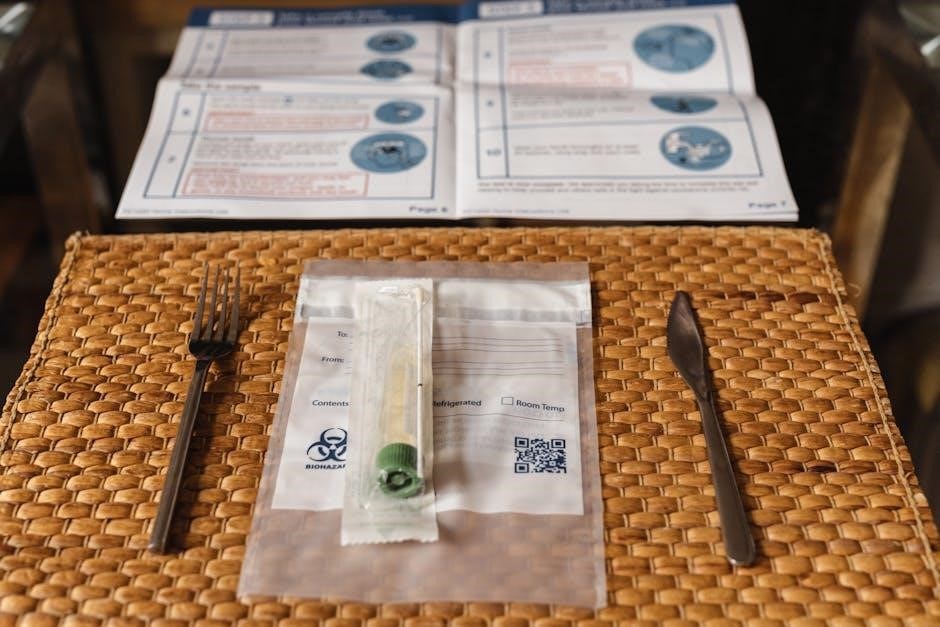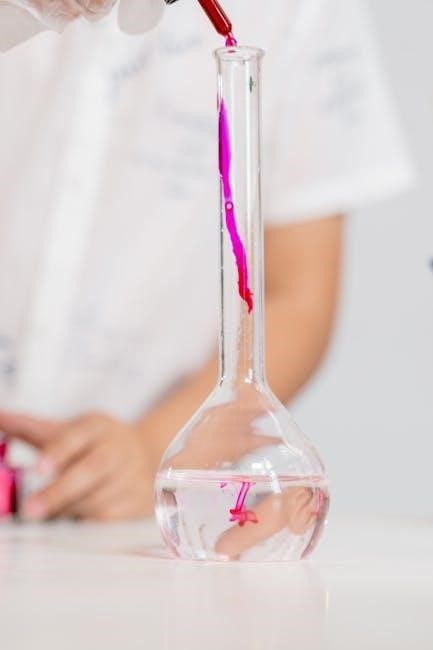The late-night salivary cortisol test measures cortisol levels in saliva, typically collected between 11 PM and midnight. It helps diagnose conditions like Cushing’s syndrome by detecting excess cortisol production.
1.1. What is a Late-Night Salivary Cortisol Test?
A late-night salivary cortisol test measures cortisol levels in saliva, collected between 11 PM and midnight. It helps detect excess cortisol production, often linked to conditions like Cushing’s syndrome. The test is non-invasive, involving spitting into a tube, and avoids food, drink, or oral medication for at least 30 minutes before collection. Elevated late-night cortisol levels may indicate hormonal imbalances, making this test a valuable diagnostic tool for endocrine disorders. It leverages the natural circadian rhythm of cortisol, which is typically lowest at night.
1.2. Why is the Test Performed?
The late-night salivary cortisol test is primarily performed to detect excess cortisol levels, which may indicate conditions like Cushing’s syndrome. Cortisol typically follows a circadian rhythm, peaking in the morning and dropping at night. This test is non-invasive and convenient, allowing patients to collect samples at home. It helps diagnose hormonal imbalances and monitor recurrence of Cushing’s syndrome after treatment. The test’s simplicity and effectiveness make it a valuable tool for identifying and managing endocrine disorders.

Preparation for the Late-Night Salivary Cortisol Test
Preparation involves relaxing for 1 hour before collection, avoiding food and drink for 30 minutes, and not brushing teeth. Avoid steroid medications 24 hours prior.
2.1. Pre-Collection Preparations
Pre-collection preparations require patients to relax for about an hour before saliva collection. Eating, drinking, and oral medications should be avoided for at least 30 minutes. Brushing or flossing teeth is also prohibited during this period to prevent bleeding. Additionally, patients must avoid using steroid creams, lotions, or inhalers for 24 hours prior to the test to ensure accurate results. These steps help maintain the integrity of the saliva sample and prevent any external factors from interfering with cortisol levels. Proper preparation is crucial for reliable test outcomes.
2.2. Activities to Avoid Before Testing
Patients should avoid eating, drinking, smoking, or chewing gum for at least 30 minutes before saliva collection. Brushing or flossing teeth should also be avoided to prevent bleeding, which could contaminate the sample. Additionally, using steroid creams, lotions, or inhalers for 24 hours prior to testing is prohibited, as these can interfere with cortisol levels. Avoiding these activities ensures the accuracy of the test results and helps maintain the integrity of the saliva sample. Adhering to these guidelines is essential for obtaining reliable data.

Collecting the Saliva Sample
The saliva sample is typically collected between 11 PM and midnight using a Salivette device. Avoid eating, drinking, or brushing teeth before collection.
3.1. Recommended Time for Collection
The saliva sample should be collected between 11:00 PM and midnight for accurate results. This timing aligns with the natural circadian rhythm, when cortisol levels are typically lowest. Collecting outside this window may lead to inaccurate results or the need for retesting. Ensure the sample is taken no earlier than 11:00 PM and no later than 12:00 AM to maintain consistency and reliability in testing. Adhering to this timeframe is crucial for diagnosing conditions like Cushing’s syndrome, where elevated late-night cortisol levels are a key indicator.

3.2. Step-by-Step Collection Instructions
To collect the saliva sample, relax for 1 hour before collection. Avoid eating, drinking, or oral hygiene for 30 minutes prior. Open the Salivette tube, remove the swab, and place it in your mouth until saturated. Alternatively, drool directly into the tube. Ensure the swab does not touch any surfaces. Once sufficient saliva is collected, replace the swab in the tube, tighten the cap, and label the tube with your name and date. Store it as instructed and return it to the lab promptly. Follow all provided guidelines for accurate results.
3.3. Handling and Storing the Specimen
After collection, avoid contamination by ensuring the specimen tube is tightly sealed. Store the saliva sample at room temperature or refrigerate it if submission to the lab will be delayed. Label the tube with your name, date, and collection time for proper identification. Return the specimen to the laboratory as soon as possible to prevent degradation of cortisol levels. Follow any additional storage instructions provided by your healthcare provider or the lab to ensure accurate test results. Proper handling and storage are critical for reliable outcomes.
Post-Collection Procedures
After collecting the saliva sample, ensure it is properly labeled and stored according to the instructions provided. Promptly return the specimen to the laboratory.
4.1. Returning the Sample to the Laboratory
After collecting the saliva sample, ensure it is properly sealed and labeled with your name, date, and time of collection; Store the specimen in the provided container, following any specific storage instructions, such as keeping it refrigerated. Return the sample to the laboratory as soon as possible to avoid delays in processing. Ensure all required documentation, such as completed forms, is included with the specimen. Timely submission is crucial for accurate test results and diagnosis. Adhere to the laboratory’s guidelines for specimen drop-off or mailing.
4.2. Completing Required Documentation
After collecting the saliva sample, complete all required documentation to ensure accurate processing. Fill out the provided forms with your personal details, the date, and the exact time of collection. Include any additional information requested, such as medications or medical conditions. Incomplete or inaccurate documentation may result in delays or rejection of the sample. Ensure the form is signed and submitted along with the specimen. Follow the laboratory’s specific instructions for proper submission to guarantee timely and accurate test results.

Interpreting Test Results
Late-night salivary cortisol levels are compared to normal ranges to determine if results are abnormal. Elevated levels may indicate Cushing’s syndrome or other hormonal imbalances. Timing and individual factors can influence results, which are analyzed by healthcare providers to guide further diagnostic steps or treatment plans.
5.1. Understanding Normal and Abnormal Cortisol Levels
Normal cortisol levels in late-night saliva are typically low, reflecting the natural circadian rhythm. Abnormal levels, particularly elevated ones, may suggest Cushing’s syndrome or other endocrine disorders. Healthcare providers compare results to established reference ranges, considering factors like collection time and individual health conditions. Abnormal results often require additional testing for confirmation and diagnosis. Accurate interpretation ensures proper management and treatment plans are implemented. Timing and consistency in sample collection are crucial for reliable results.

5.2. Factors That May Affect Test Results
Several factors can influence late-night salivary cortisol test results. Steroid medications, stress, or sleep disturbances may elevate cortisol levels. Additionally, eating or drinking before collection, brushing teeth, or using steroid creams can interfere with accuracy. Certain medications, licorice consumption, and chronic bleeding or oral issues may also impact results. Timing adherence is critical, as deviations from the 11 PM to midnight window can lead to inaccurate measurements. Proper preparation and avoidance of these factors ensure reliable test outcomes. Consultation with healthcare providers is essential for interpreting results correctly.
Special Considerations
Patients using steroid medications or experiencing chronic bleeding or oral issues require special handling. Consult your physician for tailored instructions to ensure accurate test results.

6.1. Instructions for Patients Using Steroid Medications
Patients using steroid medications must avoid creams, lotions, or inhalers containing steroids for 24 hours before the test. This prevents interference with cortisol levels. If chronic steroid use is necessary, consult your physician for guidance, as the test may need to be postponed. Systemic steroid use within two weeks of the test can invalidate results. Always inform your doctor about steroid use to ensure accurate testing and appropriate adjustments to your treatment plan.
6.2. Handling Chronic Bleeding or Oral Issues
If you have chronic bleeding or oral issues, avoid collecting saliva if there is active bleeding. Consult your physician for guidance, as this may require special arrangements; If bleeding is minimal, gently swish water in your mouth before collection to reduce contamination. Ensure the swab is placed carefully to avoid aggravating sensitive areas. Proper handling ensures accurate test results and prevents complications. Always follow your doctor’s advice for managing such conditions during the test.
Additional Tips for Accurate Results
To ensure accurate results, avoid eating, drinking, and brushing teeth before collection. Relax to minimize stress-induced cortisol fluctuations. Adhere strictly to timing guidelines.
7.1. Adhering to Timing Guidelines
Adhering to the specified timing is crucial for accurate late-night salivary cortisol test results. The sample must be collected between 11:00 PM and midnight, as cortisol levels naturally peak in the morning and drop to their lowest at night. Collecting outside this window may lead to incorrect readings. Ensure the test is performed precisely within the recommended time frame to avoid the need for repetition. Proper timing ensures that the results reflect the body’s natural cortisol rhythm accurately.
7.2. Avoiding Interference from Other Substances
To ensure accurate results, avoid substances that may interfere with cortisol levels. Refrain from consuming black licorice, as it contains glycyrrhizin, which can alter cortisol measurements. Additionally, avoid steroid medications, creams, or inhalers for at least 24 hours before the test, as they can elevate cortisol levels. Do not smoke, chew gum, or use nasal sprays, as these may contaminate the sample. Adherence to these guidelines minimizes external factors that could skew results, ensuring reliable data for diagnosis. Always consult your healthcare provider for specific instructions on medications.

Leave a Reply